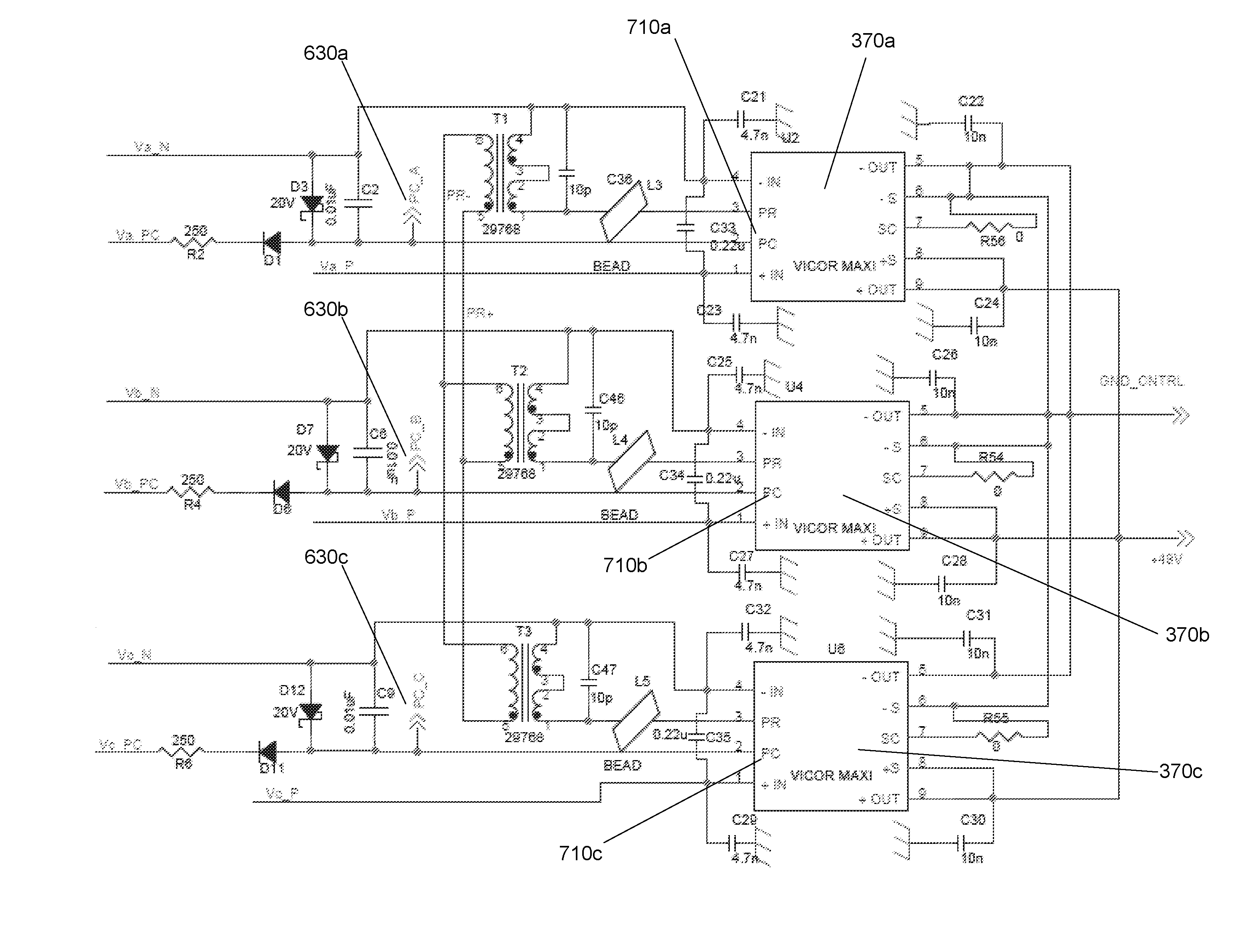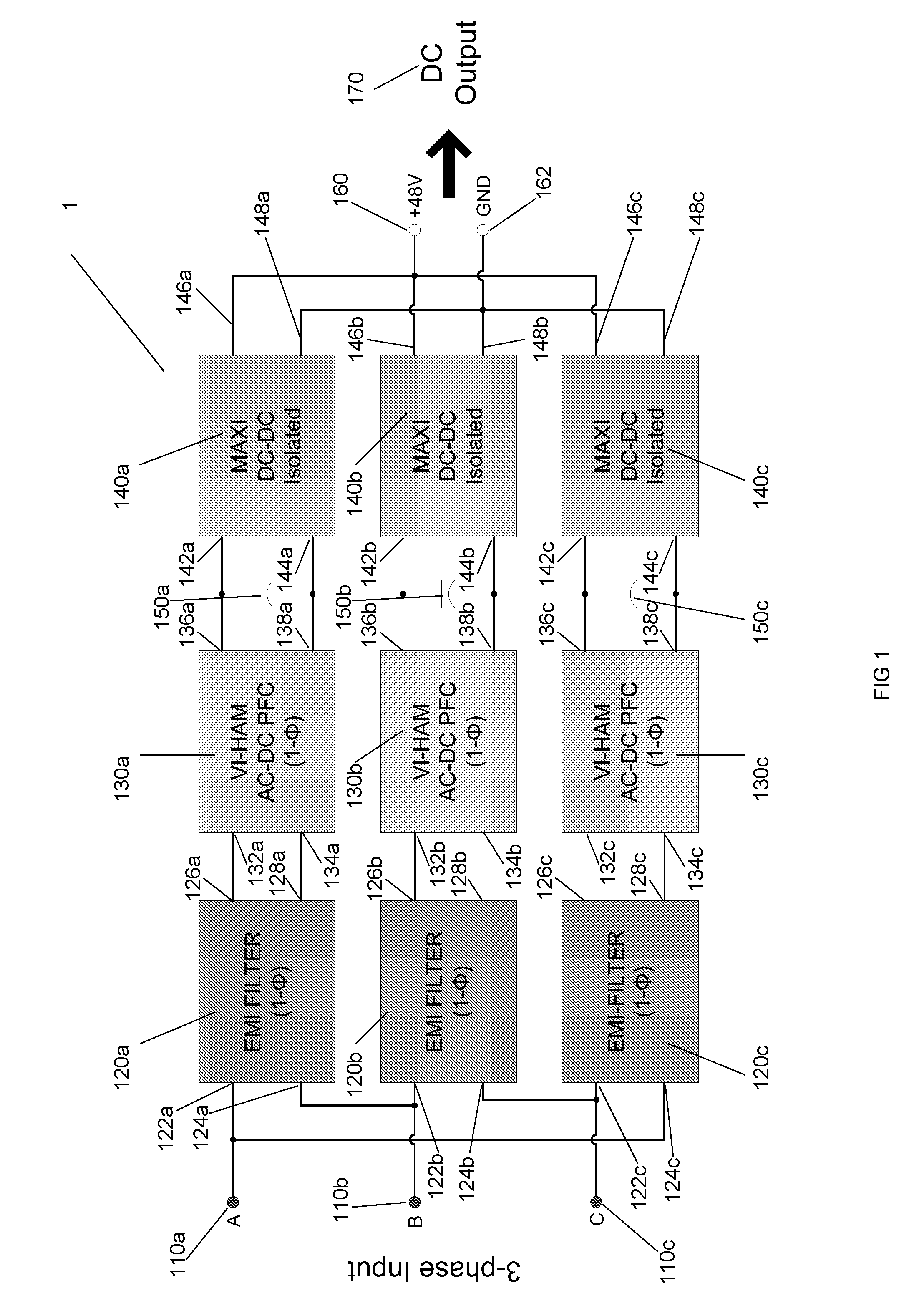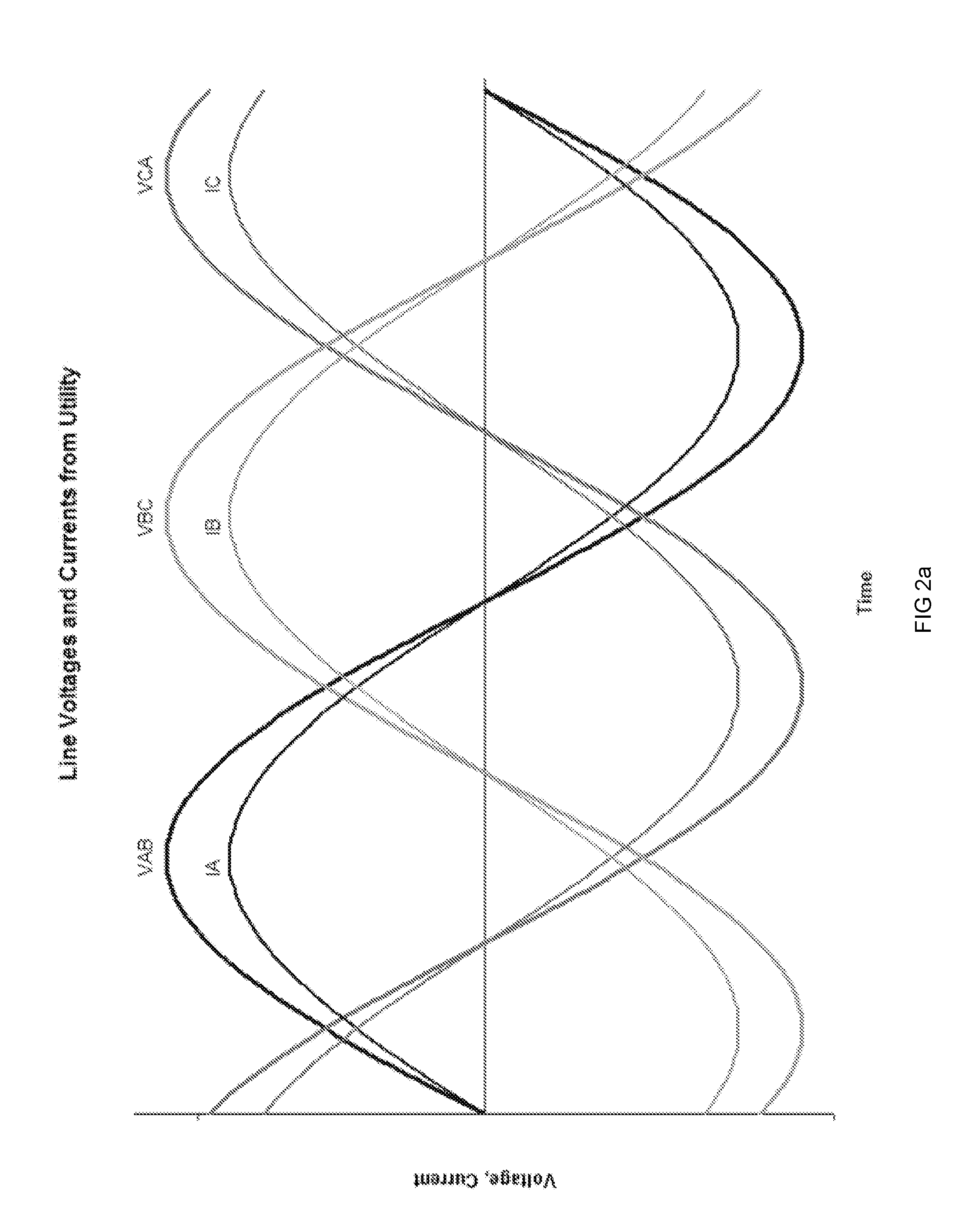3-phase power factor corrected ac to DC filtered switching power supply
- Summary
- Abstract
- Description
- Claims
- Application Information
AI Technical Summary
Benefits of technology
Problems solved by technology
Method used
Image
Examples
Embodiment Construction
[0022]Reference will now be made in detail to the present exemplary embodiments of the invention, examples of which are illustrated in the accompanying drawings.
[0023]The present invention relates to three-phase AC-to-DC delta power conversion in a shipboard power system.
[0024]FIG. 1 illustrates a block diagram of an exemplary embodiment of a power supply 1 of the present invention configured to convert three-phase delta AC power to DC power. As shown in FIG. 1 the power supply receives three single-phase inputs 110a-c corresponding to each of the three phases of the three-phase AC power source.
[0025]FIG. 2a is a graph illustrating an exemplary three-phase AC signal. FIG. 2b is a graph illustrating an exemplary single-phase AC signal which may be provided as one of the inputs 110a-c to the power supply 1 of FIG. 1.
[0026]Referring again to FIG. 1, the exemplary power supply of the present embodiment comprises three EMI filters 120a-c, each EMI filter having a first input line 122a-c ...
PUM
 Login to View More
Login to View More Abstract
Description
Claims
Application Information
 Login to View More
Login to View More - R&D
- Intellectual Property
- Life Sciences
- Materials
- Tech Scout
- Unparalleled Data Quality
- Higher Quality Content
- 60% Fewer Hallucinations
Browse by: Latest US Patents, China's latest patents, Technical Efficacy Thesaurus, Application Domain, Technology Topic, Popular Technical Reports.
© 2025 PatSnap. All rights reserved.Legal|Privacy policy|Modern Slavery Act Transparency Statement|Sitemap|About US| Contact US: help@patsnap.com



